Opinion
Without a control tower, Sydney’s new airport will die hard in the hearts of travellers
Anthony Dennis
Editor, travelI’d hate to appear controlling, but I have a grievance I’d like to air. News of the decision that Australia’s newest international airport will not include a traditional control tower has hit travellers, like me, as hard as an outbreak of sudden and unexpected turbulence.
Instead, it was announced this week by Airservices Australia, the body responsible for Australia’s airspace management, that air traffic for the $11 billion new airport will be overseen by “airspace controllers”, housed in some kind of grim-sounding, data-driven bunker which – get this – will be located 20 kilometres from the airport.
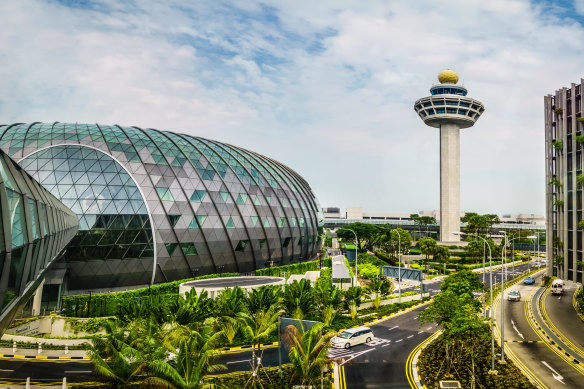
A major airport devoid of a control tower is like a grand cathedral without a spire. Pictured: Singapore’s Changi Airport.Credit: Alamy
So the complex, round-the-clock aircraft arrivals and departures will be tracked, not from the signature slanted windows of a landmark tower, such as the one with the durian-like top that frames the view as you arrive by road at Singapore’s legendary Changi Airport, but via a bank of 20 remote-control cameras atop a 45-metre-high mast. Every “camera detection” will then be projected onto screens at the Digitised Aerodrome Service (DAS) centre at Eastern Creek.
This is sad if not alarming news for plane-spotters, airport passengers and control-tower tragics such as me. A major airport devoid of a control tower is like a cathedral denied a spire. Without one, the new Western Sydney International (Nancy-Bird Walton) Airport, 44 kilometres from the CBD, and expected to open in just two years, risks becoming some kind of second-rate aeronautical Westfield.
Control towers add a note of excitement, much needed these days. Around the world, modern-day airport terminals increasingly look like glorified shopping centres-cum-food courts with a bit of security and passport control as a side serving.
Rising confidently above busy runways, control towers are reassuring beacons of hope for passengers, especially nervy ones, and surely for pilots, too, confirming that someone immensely qualified and responsible is fully watching out for, and over, you.
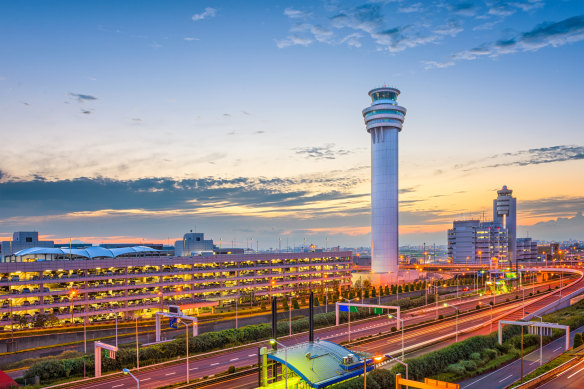
Control towers are like “reassuring beacons of hope”. Pictured: Tokyo’s Haneda Airport.Credit: iStock
These venerable structures stand tall as one of the last links to the romance of air travel. They can also make for striking architectural statements that help provide otherwise bland airports with some sort of visual identity.
The acclaimed Australian architect Ken Woolley designed the control tower at the existing Sydney International Airport at Mascot, and remains one of the finest and imaginative examples of what can be achieved with such an otherwise utilitarian erection.
Opened in 1996, it’s distinguished by its serpent-like, spiral stairwell-cum-fire escape curling around its main superstructure and leading to the main platform consisting of a ring of canister-like bays inevitably dubbed “the beer cans”. Whenever I fly, I always keep an eye out for it during taxi and take-off.
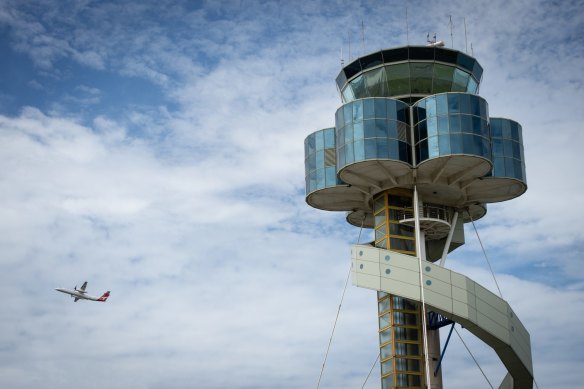
The Ken Woolley-designed control tower at Sydney International Airport.Credit: Wolter Peeters
Both it and its predecessor are heritage-listed, such is the importance of control towers to the life and operations of an airport. Most stand tall but they can also be quaint and quirky, such as the now decommissioned version at Wellington Airport in New Zealand which was positioned at the elevated point of a suburban street and wedged between rows of houses.
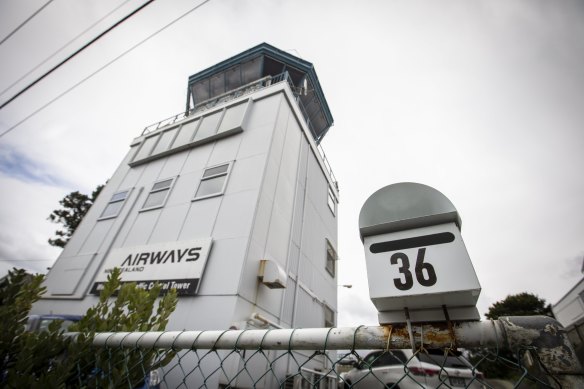
Wellington Airport’s decommissioned control tower.Credit: Rosa Woods/ Stuff
Its appearance outside your aircraft window, as you took off and landed, always prompted a smile and took your mind off the incessantly high and fluky, if not dangerous, winds for which the diminutive New Zealand capital is notorious.
It’s since been replaced by an ultra-modern tower which was opened in 2018 and, like its Sydney counterpart, is also an architectural statement, except that its intentional pronounced lean is concerningly suggestive of an earthquake having occurred.
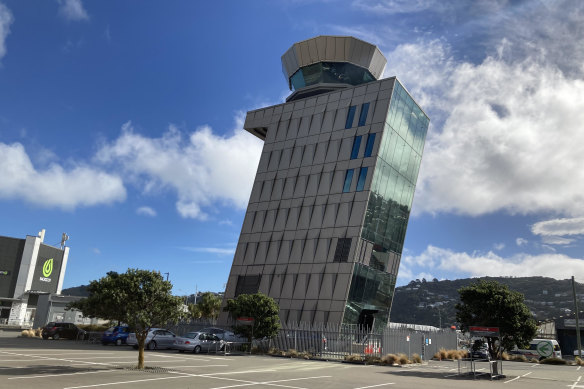
Wellington Airport’s new control tower is an architectural statement.Credit: Alan Granville/Stuff
The demise of the control tower as a major feature of airports also likely marks the beginning of the end of their cultural relevance, have played important roles in Hollywood movies such as Airport, Flying High, Die Hard 2 and Pushing Tin.
Somehow a scene set in a Digitised Aerodrome Service bunker, while sounding a little sci-fi, doesn’t have quite the dramatic appeal of a movie shot inside a proper control tower where the action inside and out can be seen in clear sight.
Die hard, the classic airport control tower.
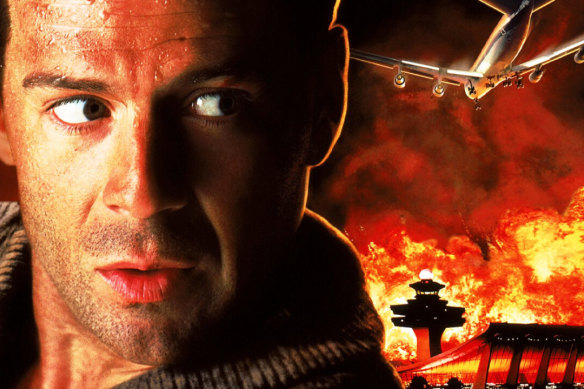
Bruce Willis in a Die Hard scene not portrayed in a Digitised Service Bunker. Credit: 20th Century Studios
Anthony Dennis is travel editor at The Age and The Sydney Morning Herald.
Sign up for the Traveller newsletter
The latest travel news, tips and inspiration delivered to your inbox. Sign up now.